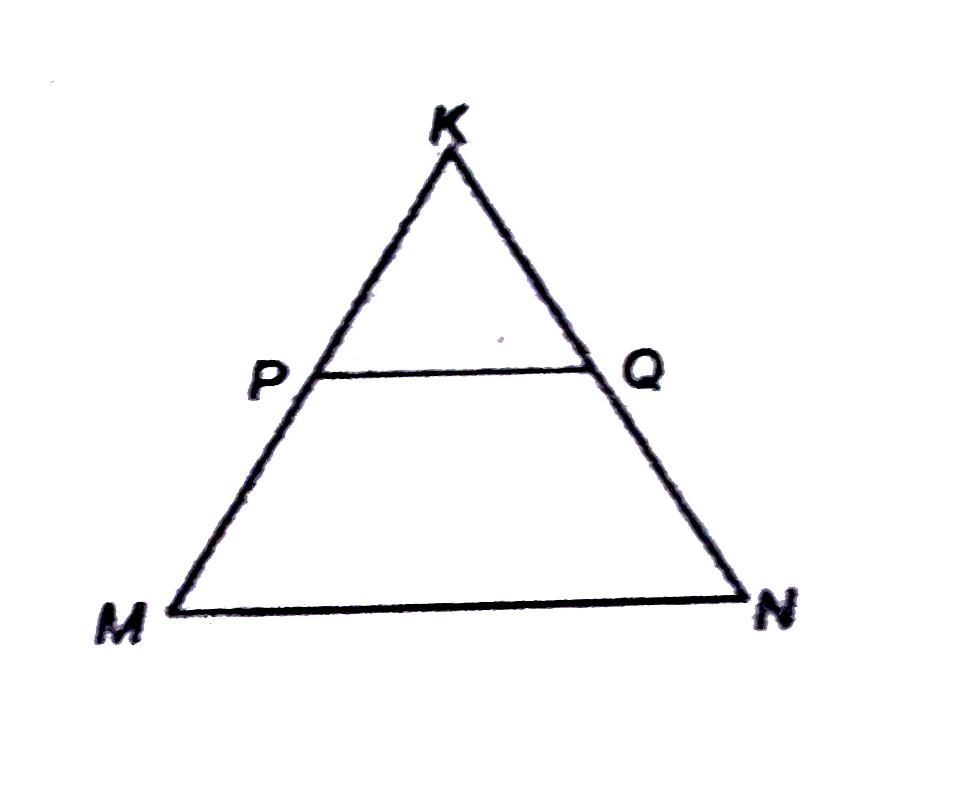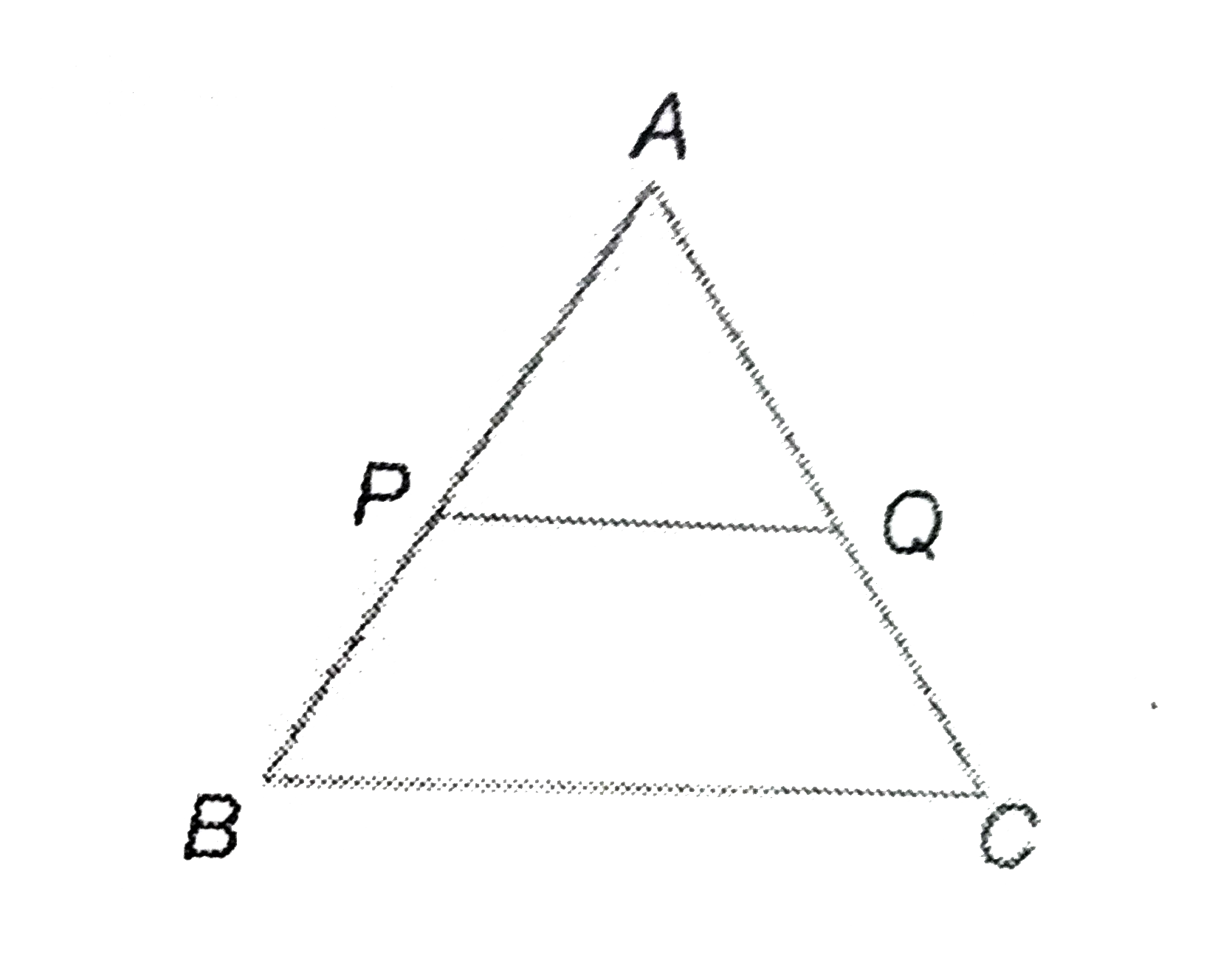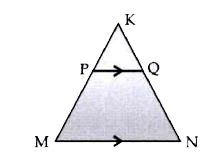In the figure PQ is parallel to MN if KPPM=413andKN=2.4.
Find KQ.

Video Solution
Text Solution
Given In DeltaKMN,PQ||MN
KPPM=KQQN ( by B.P.T or Thale's theorem)
Let KQ=x, then QN= 20.4 -x
now from (1)
413=x20.4−x
81.6−4x=13x
17x=81.6
x= 4.8 cm
Therefore KQ= 4.8 cm
|
Topper's Solved these Questions
- TRIANGLES BOOK - NAGEEN PRAKASHANCHAPTER - TRIANGLES EXERCISE - Problems From NCERT/ Exemplar
14 Videos
- TRIANGLES BOOK - NAGEEN PRAKASHANCHAPTER - TRIANGLES EXERCISE - Exercise 6a
23 Videos
- STATISTICS BOOK - NAGEEN PRAKASHANCHAPTER - STATISTICS EXERCISE - Revision Exercise Long Answer Questions
5 Videos
- VOLUME AND SURFACE AREA OF SOLIDSBOOK - NAGEEN PRAKASHANCHAPTER - VOLUME AND SURFACE AREA OF SOLIDSEXERCISE - Revisions Exercise Long Answer Questions
5 Videos
Similar Questions
Knowledge Check
In the following figure, PQ is parallel to BC and PQ:BC=1:3. If the area of the triangle ABC is 144cm2, then what is the area of the triangle APQ?
 A48cm2B36cm2C16cm2D9cm2
A48cm2B36cm2C16cm2D9cm2In the figure given below, YZ is parallel to MN, XY is parallel to LM and XZ is parallel to LN. Then, MY is
 AMY is median of traingle LMNBthe angular bisector of ∠LMNCperpendicular to LNDperpendicular besector of LN
AMY is median of traingle LMNBthe angular bisector of ∠LMNCperpendicular to LNDperpendicular besector of LNIn the figure given below RS is parallel to PQ. what is angle between lines PQ and LM?
 AA) 175∘BB) 177∘CC) 179∘DD) 180∘
AA) 175∘BB) 177∘CC) 179∘DD) 180∘
In the given figure PQ is parallel to MN . If KPPM=413 and KN = 20.4 cm then find KQ = …………

View SolutionIn the following figure, PQ is parallel to BC and PQ:BC=1:3. If the area of the triangle ABC is 144cm2, then what is the area of the triangle APQ?

View Solution
In the figure given above, PQ is parallel to Rs. What is ∠NMS equal to
View Solution
In the figure given above YZ is parallel to MN, XY is parallel to LM and XZ is parallel to LN. Then MY is :
View SolutionIn figure prove that
MN+NO+OP+PM>2MO

View Solution
